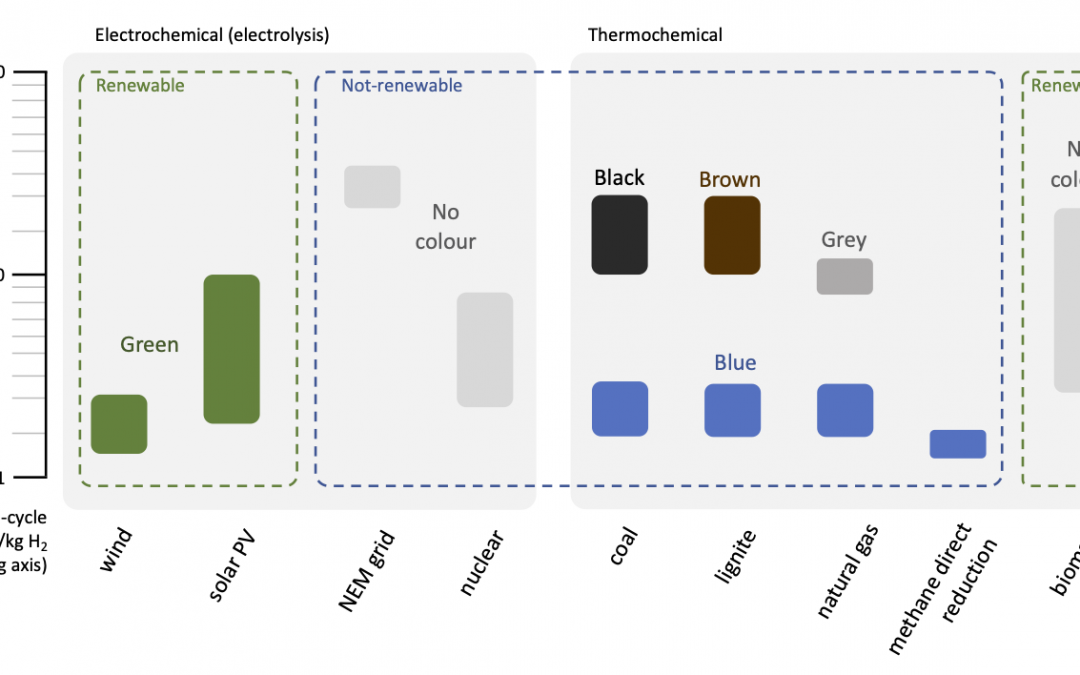Hydrogen ‘colours’ can be a useful shortcut for differentiating hydrogen supply options. But delimiting by colour can obscure the nuances between supply options, and oversimplify what are difficult policy and commercial choices.
There is no universal standard for either ‘colour’ or emission intensity, and several supply options, including nuclear, biomass and grid electricity, do not have established colours. Over the next few years, the need for traceability will see certification schemes emerge for supply chain provenance and emission intensity (such as CertifHY). These will hopefully establish universal and rigorous standards.
Our long-term objective should be ‘green hydrogen’, but cutting off other supply options may stall a long-term transition towards a hydrogen economy – renewable electrolysis is currently much more expensive than steam methane reforming and coal gasification. Furthermore, an important, but often overlooked aspect is the role of life-cycle emissions.
Life-cycle emissions
Most discussions of supply chain emissions focus on the direct emissions, or using the Australian National Greenhouse Factors, the scope 1 emissions. In the case of renewables, the scope 1 emissions are zero, but the life-cycle (or embodied) emissions may be non-trivial.
In the case of fossil fuels, typically 80 to 90% of the overall life-cycle emissions are due to the direct (scope 1) emissions from combustion, and therefore are straightforward to calculate. Similarly, scope 2 emissions refer to electricity generation emissions and can be easily looked up.
But in the case of renewables, biomass and nuclear (not adopted in Australia), all of the emissions are indirect, and embodied in the capital and to a lesser extent, operations. In principle, these indirect emission are identified as the scope 3 ‘life-cycle’ emissions, but the term ‘life-cycle’ belies substantial differences in the literature. For example, an IPCC review shows the large range of emission intensities within, and across, renewable and non-renewable electricity generation options. For the purpose of Australian greenhouse reporting, there is no prescribed methodology or boundary for scope 3 emissions.
In previous work I’ve done with Josh Floyd, we identified an order-of-magnitude difference between reported embodied energy differences of renewable energy. The reasons for the large difference are due to different goals, life-cycle methodologies, and system boundaries. All energy supply technologies utilise infrastructure, transport and services that rely on energy and material flows drawn from global supply chains. In the long-term, these supply chains will decarbonise, but in the short to medium term, all hydrogen supply options carry a non-trivial emissions profile. In order to drive towards a hydrogen economy, it is important to look beyond the ‘colours’ of hydrogen and consider the multiple factors that will facilitate or inhibit long term goals, such as cost, emissions, ecological impacts, sustainability, technology learning rates, and other factors.


Recent Comments